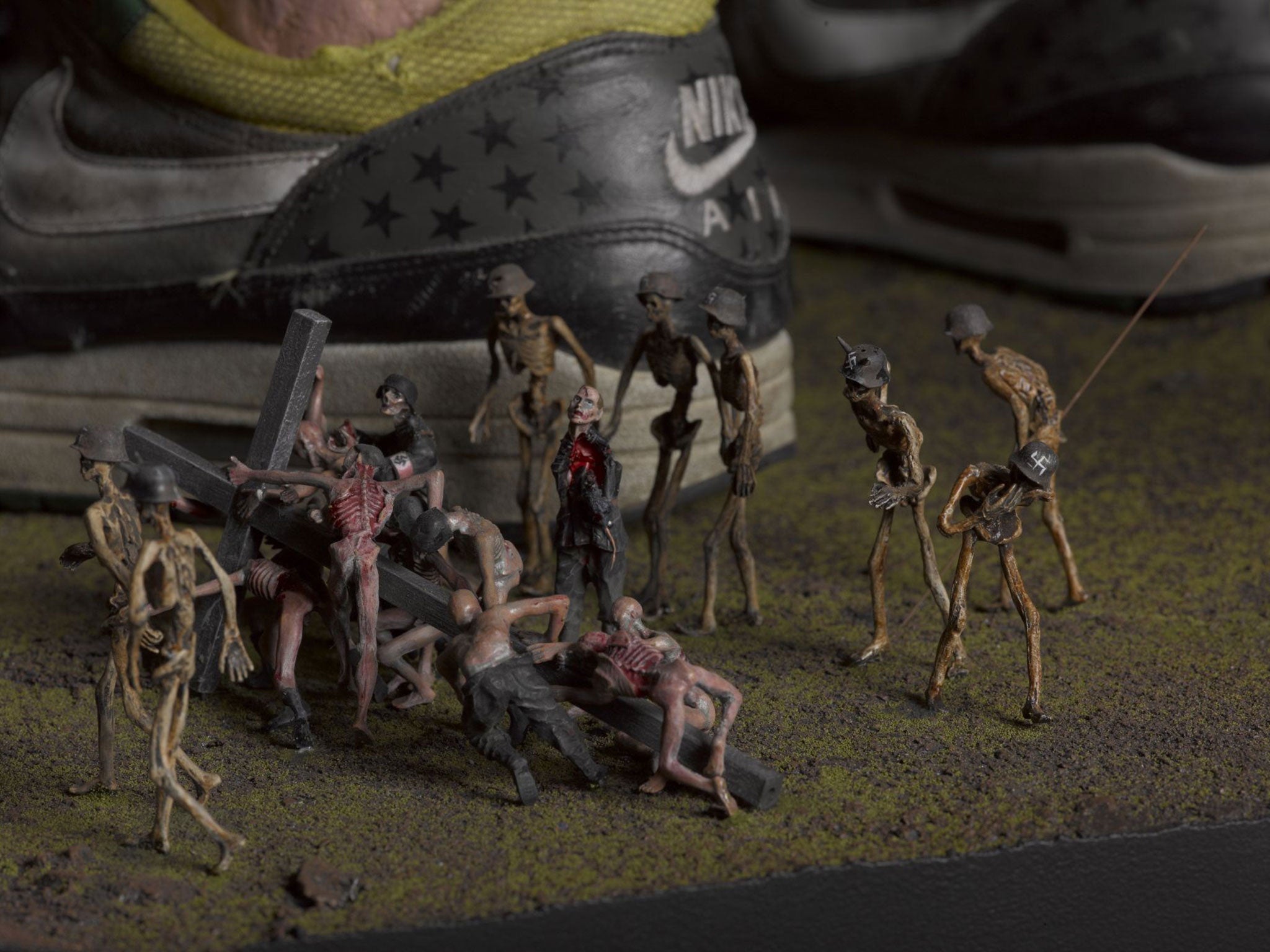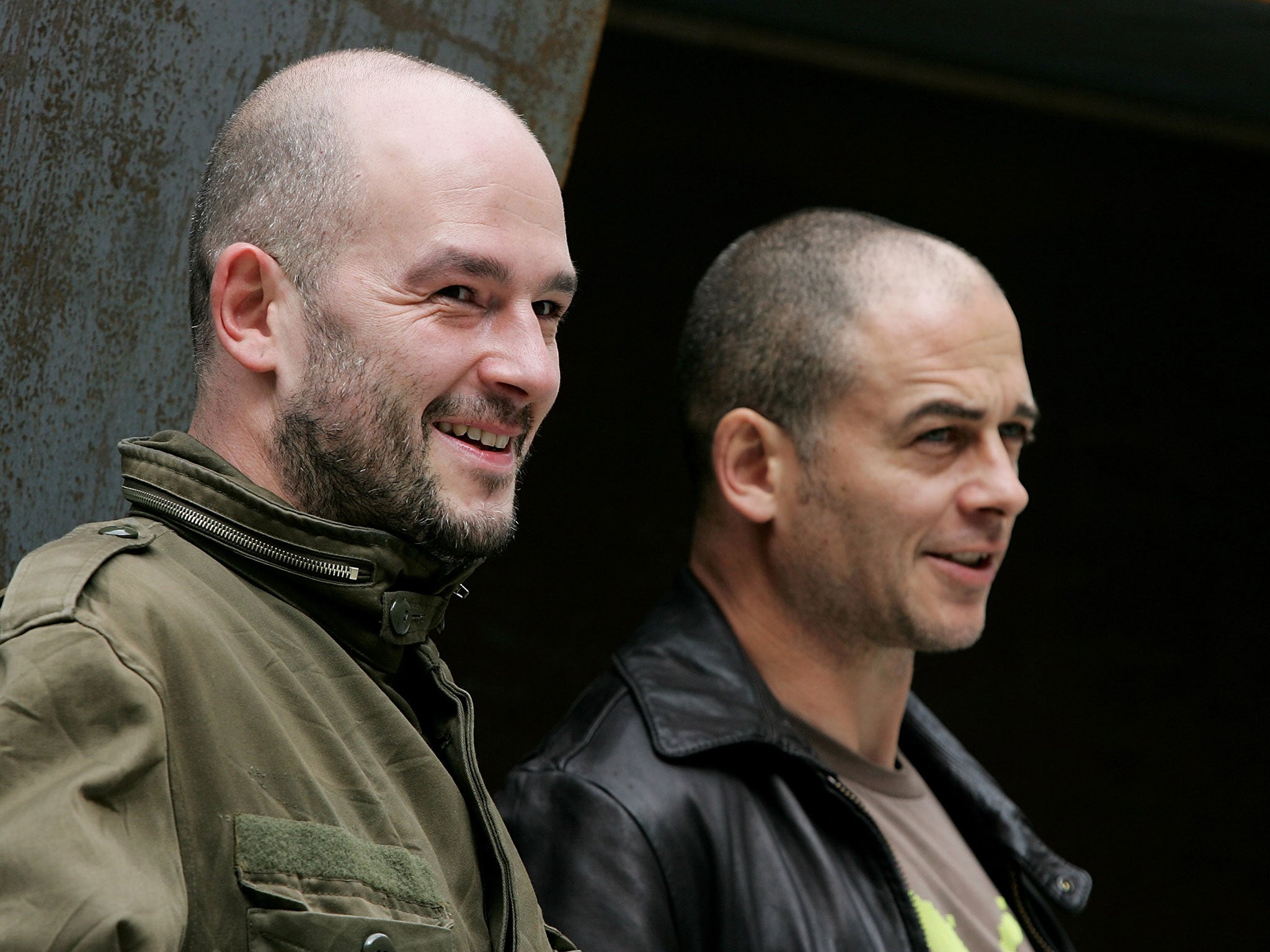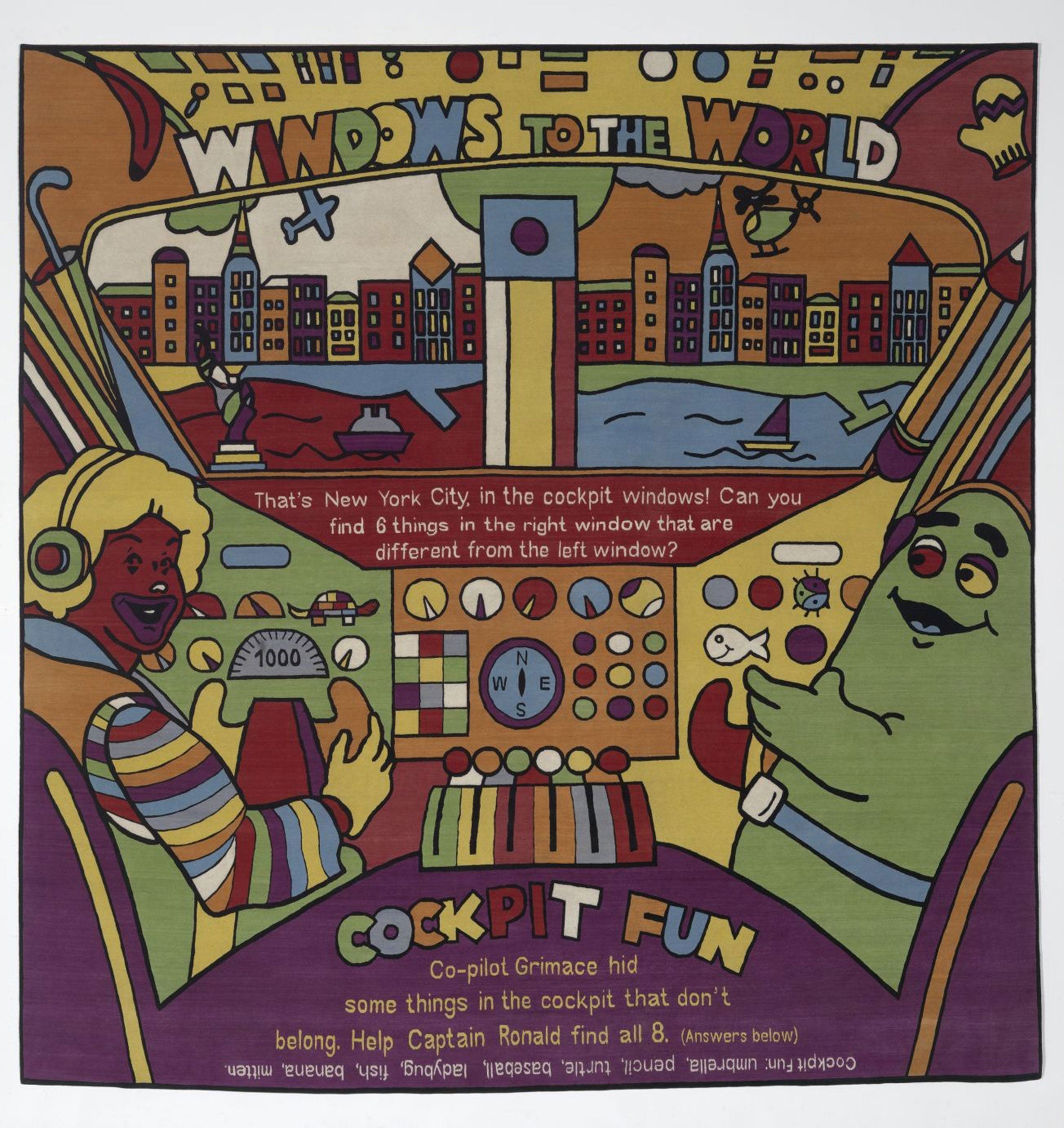Jake and Dinos Chapman, In the Realm of the Unmentionable: The ‘bad boys’ who love to tempt the viewer and then smack them
This latest show in their hometown of Hastings displays the brothers' trademark mix of blokiness and jokiness

Your support helps us to tell the story
From reproductive rights to climate change to Big Tech, The Independent is on the ground when the story is developing. Whether it's investigating the financials of Elon Musk's pro-Trump PAC or producing our latest documentary, 'The A Word', which shines a light on the American women fighting for reproductive rights, we know how important it is to parse out the facts from the messaging.
At such a critical moment in US history, we need reporters on the ground. Your donation allows us to keep sending journalists to speak to both sides of the story.
The Independent is trusted by Americans across the entire political spectrum. And unlike many other quality news outlets, we choose not to lock Americans out of our reporting and analysis with paywalls. We believe quality journalism should be available to everyone, paid for by those who can afford it.
Your support makes all the difference.Hastings is under the spell of Hurricane Gonzalo and I am waiting for the feet of God, which are late due to a puncture in west London. They finally arrive, along with Dinos Chapman, one of their makers. This is a homecoming for the self-acknowledged “bad boys” whom Hastings consider their own: the Chapman brothers were raised here. Jake was born in 1966 in Cheltenham, Dinos in 1962 in London, but they moved en famille to Hastings and attended a local comprehensive school here. Their sister and parents still live here.
Hastings comes hot on the heels of their London Serpentine show last year. I am really tired of all the shock for the sake of shock – but am prepared to be swept away by the final results. It is not just the Serpentine exhibition that I have seen, but the Tate Liverpool show, gallery shows in White Cube in both Mason’s Yard and Hoxton Square, London, as well as exhibitions in Düsseldorf and Venice, and the one that burns most in the memory: the ICA in 1996.
It was their inclusion in Sensation at the Royal Academy in 1997, the now infamous public debut of a group of artists now fully grown but stuck forever with the epithet of YBAs, which launched the Chapman Brothers into the public consciousness. Chapmanworld, the ICA show, with its display of sculptures displayed incongruously on artificial grass, featured children who were at first glance innocently disporting but upon closer examination sported phalluses for noses and vaginas for mouths. They were often multi-headed. They sucked the viewer in and then sucker-punched them with the imagery, something that I am reminded of when I peer at the new work here at the Jerwood. The Rainbow series, a suite of hand-coloured etchings, is at first glance sweet and touching.

I point at one, and Dinos, says, “That is based on a Hitler watercolour, and that one is Blondi, Hitler’s dog; and that is the book cover on Satanism that scared me and my brother and my mother had to hide it. But we would find it”. I ask about the aesthetic, and he says, “That is what I love to do, tempt the viewer and then smack them.”
When I ask Dinos about Hastings and their progression to art college he says, “Jake is the sculptor – he trained at the Royal College – and I am the painter, also trained at the Royal College; but neither of us learned a lot.”
Liz Gilmore, the director of the Jerwood, says that she felt it was important to bring their work to Hastings. The show was more expensive than the gallery could afford on its normal budget so they used the Art Fund, a new crowd-sourcing platform to help museums raise money for “highly creative” projects. Setting out to raise £25,000 they surpassed their target, raising close to £30,000. Gilmore admits the funding was at times rocky, as some thought that the money was going directly to the “rich gits”, as many of the locals now perceive the brothers.
It is the locals who will benefit from the free tattoo parlour that the brothers are running before the show’s official opening. Transforming the education room into a pop-up inking room has challenged the team with health and safety issues. Not unexpectedly. Dinos snorts: “This is not the first time we have done tattoos. At Montreal we did a similar thing, and most of the audience chose to have Blondi, the German shepherd, not realising that it was Hitler’s dog.”
Dominating this show is The Sum of All Evil, an installation composed of four separate vitrines that are waiting to receive the ‘Feet of God’ – “especially reworked for this exhibition”. It is another reworking of Hell, a piece from 2000. While I am waiting for the feet’s arrival, I chat to Ben Lund, one of the studio assistants who has been working with the Chapman brothers for more than five years. The glass sheets that usually surround the vitrines are not in place yet so I have a privileged view of the intricate concoction of figures and animals.

Like all Chapman works there are shocking elements such as copulating dragons simultaneously birthing and eating Nazis. There are around 50,000 individual figures at 35:1 scale in each vitrine, weighing in at 800kg. Adding the glass brings the weight up to a ton. I ask Lund if he has a favourite figure to work with, and he points at the wiry-looking skeletons. “They are made of lead, not resin, and can be more activated.”
I later ask Dinos if he has a favourite figure and he says no, and then says, yes, and leads me to a grouping of prehistoric figures riding around on ancient carts. He admits that as children they played with soldier figures. Sadly, they are not available any more, so they need to manufacture their own.
Hell was one of the many works by various artists that fell victim to the fire that swept through the Momart art storage company in 2004. I ask if it is true that shortly afterwards the Chapmans declared they had remade Hell and it was better. Dinos laughs: “The idea was to re-create all the works destroyed in the fire. In the end we made several versions of Hell in different sizes; this is a smaller one than the one in the Pinault Collection in Venice comprising nine separate vitrines”. Nearby sits the provocatively titled The Same Only Better (2010), their remake of Tracey Emin’s tent, Everyone I Have Ever Slept With 1963–1995 (1995). I ask what she said after they allegedly offered to give it to her. “She said it was too painful to remake,” says Dinos diplomatically.
Recycling is part of their work. “It is like constantly worrying a scar,” says Dinos. Their most famous recyclings are of the Spanish master Goya’s Los Caprichos, a set of etchings depicting the horrors of war. The Chapmans infamously bought an original set of etchings in 2003 and then gave it the Chapman treatment, replacing faces with monstrous visages. There was horror at the time at the defacement of a master’s work, but the virtuosity with which the Chapman Brothers performed the task assuaged criticism and in some cases attracted praise. There is a new set here, again displaying a not insignificant level of virtuosity and understanding of transformation. There is also nearby a set of thrift shop finds wittily entitled One Day You Will No Longer Be Loved (2008), which have been improved or defaced depending on your point of view. Beautifully installed here, there is the same impact when you approach this series of portraits.
Through this gallery is one with a lowered ceiling, designed especially for children, and “to make the grown-ups crawl in” says Dinos. Here will be one work only, an original Hitler watercolour that they have discovered. “Hitler might well have been different if he had been accepted at art college and become a painter,” says Dinos seriously (or as seriously as he ever gets).

Before I leave Hastings, I return to see the vitrine where Lund has now dressed and inserted the custom-made severed legs with incongruous bright, apparently home-knitted socks. The feet and graphically severed legs are, unlike the tiny model figures, human scale.
So is this show any good? Well, the blokiness and jokiness cover serious lashings of good old-fashioned work. It challenges, and for a seaside town with a huge mixture of cultures, it will attract both attention and debate. Gilmore has managed to curb some of the artists’ more extreme excesses. I recall meeting a collector who had a portrait done in the Chapmans’ painting booth at Frieze London 2006 and was lamenting the depiction of his nose as phallus: “Where could I hang it?” When I tell Dinos this, he says, “They should take the consequences of what we are making.” Gilmore will need to take the consequences of the insertion of the “feet of God” into her gallery: it will certainly get people walking in.
Jake and Dinos Chapman: In the Realm of the Unmentionable, Jerwood Gallery, Hastings (01424 728377) to 7 January
Join our commenting forum
Join thought-provoking conversations, follow other Independent readers and see their replies
Comments